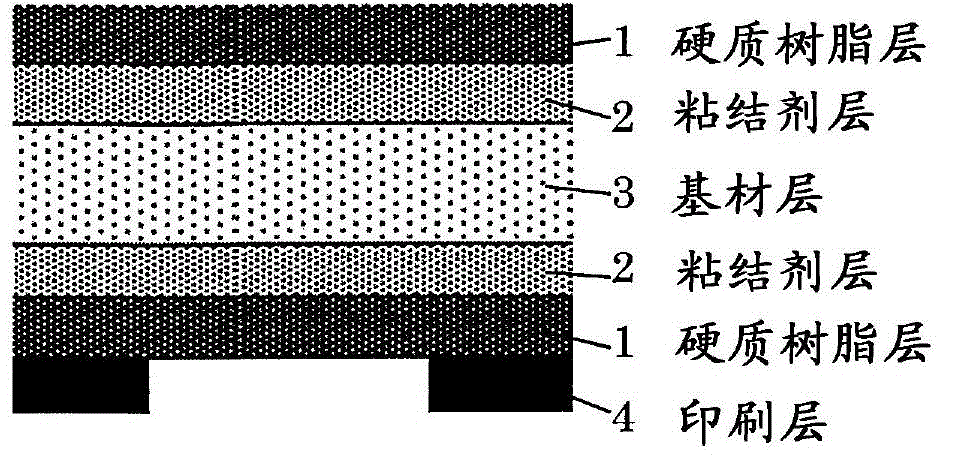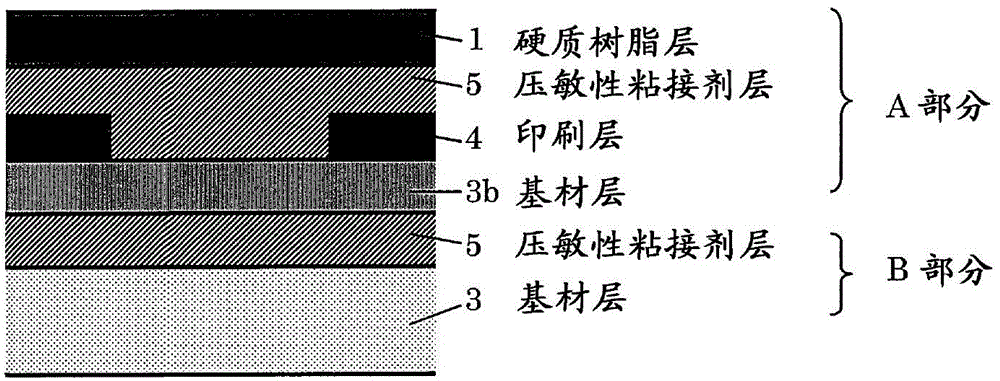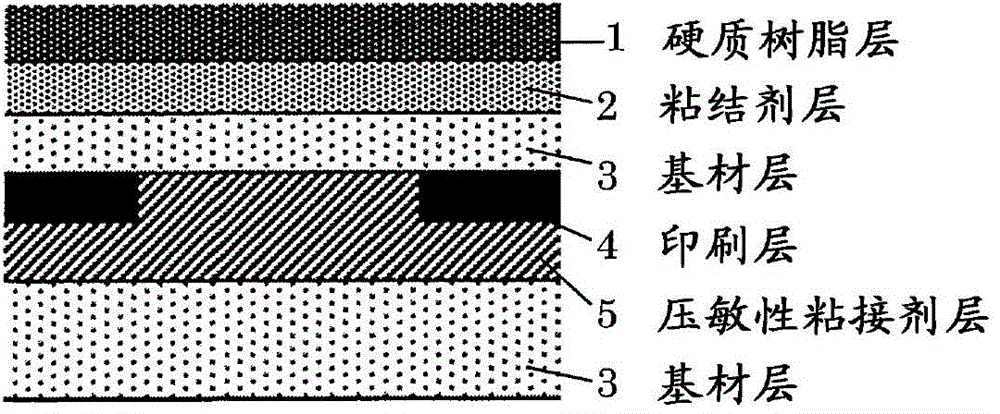Resin laminate
A technology of laminates and resin layers, applied in synthetic resin layered products, layered products, chemical instruments and methods, etc., can solve the problem of differences in wear resistance and scratch resistance, inability to achieve pencil hardness, hindering transparency Problems such as property, etc., to achieve the effect of excellent processability
- Summary
- Abstract
- Description
- Claims
- Application Information
AI Technical Summary
Problems solved by technology
Method used
Image
Examples
Embodiment 1
[0100] (Preparation of hard resin layer)
[0101] 85 parts by weight of dipentaerythritol hexaacrylate and 15 parts by weight of PMMA were heated and kneaded to 110°C, and then 2.5 parts by weight of 1-hydroxycyclohexyl phenyl ketone as a photopolymerization initiator was mixed to obtain a curable resin composition.
[0102] Next, using a roll coater, the curable resin composition was cast (cast) on the peeled PET so that the thickness became 0.15 mm, and the other peeled PET was laminated on the casted After the curable resin composition, use a 30W / cm high-pressure mercury lamp to 4000mJ / cm 2 The accumulated exposure dose is cured, and the PET that has undergone the peeling treatment is completely peeled off to obtain a sheet-shaped hard resin layer with a predetermined thickness. The tensile elastic modulus and total light transmittance of the obtained hard resin layer were measured. The results are shown in Table 1.
[0103] (Manufacturing of resin laminates)
[0104] A...
Embodiment 2
[0106] Except having made the compounding composition into the weight ratio shown in Table 1, it carried out similarly to Example 1, and obtained the hard resin layer and the resin laminated body. Table 1 shows the evaluation results of the molded articles obtained.
Synthetic example 1
[0108] 400 ml of 2-propanol (IPA) as a solvent and 5% tetramethylammonium hydroxide aqueous solution (TMAH aqueous solution) as a basic catalyst were placed in a reaction vessel equipped with a stirrer, a dropping funnel, and a thermometer. 150 ml of IPA and 126.9 g of 3-methacryloxypropyltrimethoxysilane (MTMS: SZ-6030 manufactured by Dow Corning Toray Silicone Co., Ltd.) were added to the dropping funnel, and the reaction vessel was dripped at room temperature for 30 minutes while stirring the reaction vessel. Add MTMS to the IPA solution. After the dropwise addition of MTMS was completed, the mixture was stirred for 2 hours without heating. After stirring for 2 hours, the solvent was removed under reduced pressure and dissolved in 500 ml of toluene. The reaction solution was washed with saturated brine until it became neutral, and then dehydrated with anhydrous magnesium sulfate. Anhydrous magnesium sulfate was filtered off and concentrated to obtain 86 g of a cage-type s...
PUM
| Property | Measurement | Unit |
|---|---|---|
| Thickness | aaaaa | aaaaa |
Abstract
Description
Claims
Application Information
 Login to View More
Login to View More - R&D
- Intellectual Property
- Life Sciences
- Materials
- Tech Scout
- Unparalleled Data Quality
- Higher Quality Content
- 60% Fewer Hallucinations
Browse by: Latest US Patents, China's latest patents, Technical Efficacy Thesaurus, Application Domain, Technology Topic, Popular Technical Reports.
© 2025 PatSnap. All rights reserved.Legal|Privacy policy|Modern Slavery Act Transparency Statement|Sitemap|About US| Contact US: help@patsnap.com



